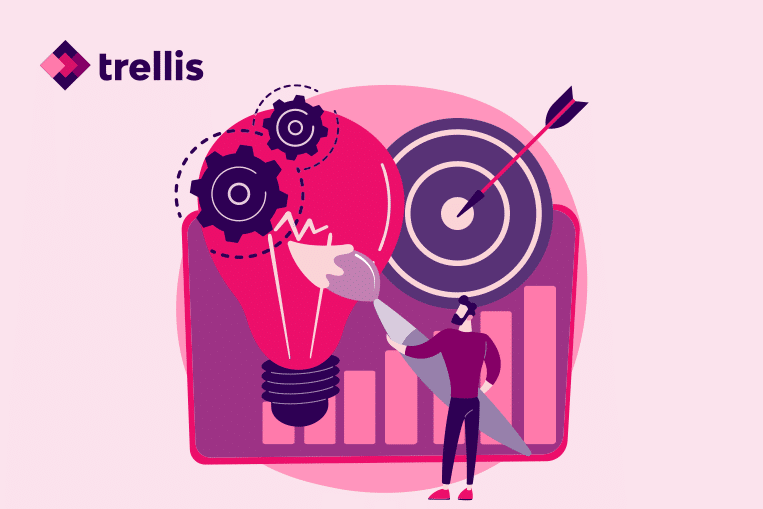Inflation seems to be on an endless upward spiral. While it’s bad news for everyone, it’s a particularly challenging situation for eCommerce sellers.
Now more than ever, brands are being forced to develop a pricing strategy that covers the new costs while still remaining competitive in the market.
For how long can merchants successfully ride this wave of ever-increasing prices? Is it possible to set an inflation-aligned pricing strategy that will allow you to grow without putting customers off in the long run?
This blog covers the answers to these teething questions and more.
Inflation impact on consumer behavior
Two years into the global COVID-19 pandemic, rising inflation rates reached a 40-year high.
Are consumers feeling the heat? They most definitely are, and it’s reflecting heavily on their purchasing power.
It’s not that consumers are not spending at all; they’re just not spending as much as they used to. Not surprisingly, people are now more focused on the must-haves rather than the nice-haves.
An April 2022 survey from CNBC and Momentive found rising concerns about inflation and the risk of recession, with Americans saying that not only have they started buying less but that they’ll buy less across more categories if inflation persists.
On Amazon, consumers’ spending behavior hasn’t been any different in the wake of rising inflation.
- 90% have noticed higher product prices in their day-to-day spending. (Jungle Scout)
- 28% of consumers say they skipped a good deal if it wasn’t a necessity (Numerator)
With consumers being more and more careful and diligent about their expenses, Amazon sellers are inevitably facing a drop in sales and as a result, incredibly slim profit margins. Although inflation hasn’t hit all seller types and product categories evenly, most Amazon merchants confirmed that June 2022 was indeed their worst month in recent history.
That said, the question naturally becomes: how do you, as an Amazon or eCommerce Seller, react to these drastic inflation hikes and still remain profitable?
Conventional Strategies
Typically, most Amazon sellers react to rising inflation in two ways, either increase prices or reduce costs. This keeps the profits margins intact but are any of these approaches truly profitable, let alone sustainable in the long run?
A conventional approach is simply raising the prices following the inflation rate. While it may deter consumers to buy from you, many do understand economics and how we lose purchasing power every year. But if you do increase the prices, the message should be conveyed well. (More on it later)
When sellers try to reduce costs, something has to give. In most cases, it is the quality of the product, the size, or the amount. The lessening of the product to reduce the cost is referred to as “shrinkflation”.
A regular customer who understands the value of your product might feel cheated. It may fall into the category of misleading consumers. If their coffee doesn’t taste the same as before, or their cookie size is smaller, your customers may sway away.
If you are looking for better solutions, there are ways smarter ways of dealing with inflation, while maintaining your brand and customer value.
Holistic Strategies
The most successful eCommerce sellers do their due diligence on the market and look for a wholesome solution to tackle inflation. They look at supply & demand, consumer trends and behavior, and try to learn more about their product.
Market research
Consumers naturally become increasingly price-sensitive during periods of inflation. As such, they tend to only purchase products they absolutely need. Sellers can classify their products as inferior, luxury, or a commodity which would help them position their product and its demand.
One of the best ways is to get into the marketplace yourself and talk to customers directly to understand their pain points and behavior regarding rising prices. Then, quantify these shifts and develop pricing strategies that balance the need to maintain both profitability and market share.
Perception of value
Price hikes can make consumers feel being on the losing side of the bargain. It is natural and the feeling can be repositioned if you give add more to your product which doesn’t cost as much. It would make the consumer feel it’s a fair trade.
Sellers can offer something more which could be in the form of dedicated customer service or an addition to the product which increases the product’s perceived value. Adding new content to your products will excite your customers.
It could even be something that was initially there. All you have to do is promote that feature in a way that elevates your customers’ overall perception of your product or service. While at it, remind them that you will continue to work hard to earn their continued patronage.
When you break the news about the price hikes, through an email or newsletter, you have an opportunity to make the relationship stronger.
Positive brand image
There’s no denying the significance of branding, and there’s no better opportunity for brands to show their genuineness and integrity than in a humanitarian and economic crisis like the ongoing pandemic-induced inflation.
Brands often neglect the influence of value-based messaging in attracting and retaining customers. Don’t just tell people why you need to adjust your product pricing. Build trust and show them that you are on a mission to solve their problems. Show them no matter how difficult things get, you care.
When crafting a value messaging framework, start by building an ideal customer profile. Follow that up with identifying their pain points and key-value elements. Competitor analysis should be in the mix, too, since that’s the only way you’ll know where you need to improve. Once you know what your buyer wants, go ahead and tailor your brand message to suit them.
If you believe the mentioned strategies won’t cut the deal with your customers, you can try using smarter pricing solutions using AI and automation.
Dynamic Pricing Strategy
Dynamic pricing is a proactive approach and one of the most advanced strategies you can implement in your business. And when your products become more price-sensitive amid inflation, it can not only help you survive but thrive under difficult circumstances.
At its core, dynamic pricing entails automatically adjusting prices to reflect changing market conditions—think: inflation, demand surges, recessions, etc. While your competitors struggle to adapt, you are able to get a leg up on them as our Dynamic Pricing adapts quickly and reliably. This way, you get to maximize the profitability of your best sellers, increase sales volume on your new products, and price competitively on your introductory products.
While there are other pricing strategies effective during inflation such as cost-plus pricing, competitive pricing, or Key-Value Item (KVI) pricing, dynamic pricing leverages volatility to separate you from your competitors.
With Trellis you will see an improvement in pricing from two features; price profiling and auto pricing.
Price Profiling
Our proprietary AI algorithm is designed to understand the most profitable prices. Once you turn on price profiling, our algorithms learn the data and let you know when it has enough data and confidence to suggest prices.
Through price elasticity and profit sensitivity charts, our tool suggests what prices to set. Changing prices every day can be some work, therefore, we automate them too.
Auto Pricing
Once the price profiling is complete, usually within 2-4 weeks, you can enroll your products in dynamic pricing for auto updates. Our tools change the prices every day so you can get the most optimal pricing according to your goals.
Our platform has two goals for pricing. Either incline towards more sales or more profit margin. You can try skewing any way you want to test the results.
If you select margin on the spectrum, the algorithm works to get the most profit out of every sale. While it may lessen your sales, you get more profit on every purchase. If you select sales on the spectrum, the algorithm will bring you more sales with potentially slimmer profit margins on every purchase.
Therefore, we set the pricing lever at optimal pricing which balances both and sets you up for overall profitability.
ADAPT Model
Mckinsey’s ADAPT model validates the dynamic pricing strategy for inflation.
Trellis’ Dynamic Pricing ticks every box in the ADAPT (Adjust, Develop, Accelerate, Plan, and Track) model while maintaining long-term value for your business and customer.
- Adjust to maintain overall brand profitability rather than focused on the profitability of each product.
- Develop an understanding of the Key-Value Items that increase your brand and customer value.
- Accelerate decision-making or price adjustments to micro demand and supply changes
- Plan ahead to forecast profitability considering the costs
- Track the performance of your price changes and understand what works better
Ticking all the boxes, Trellis focuses on the overall profitability of your brand, category, or campaigns. It also weighs in the cost input to forecast profitability. The analytics keeps a track of pricing history and performance. Using that it identifies the halo products which bring more value to the brand and other products. Its ability to make quick price changes daily also gives you a competitive advantage.
Final Thoughts
While inflation undeniably puts Amazon sellers in a very challenging position, understanding and using the full capabilities of automation and AI can help soften the blow. Combining careful analysis of competitor and consumer behavior with a tightly-knit dynamic pricing strategy will give you the best chance of walking the fine line of staying competitive in a highly competitive market while ensuring you’re raking in a high volume of sales.
We can walk you through our platform, and you can decide if dynamic pricing can help you get a competitive advantage. Book a demo today!



